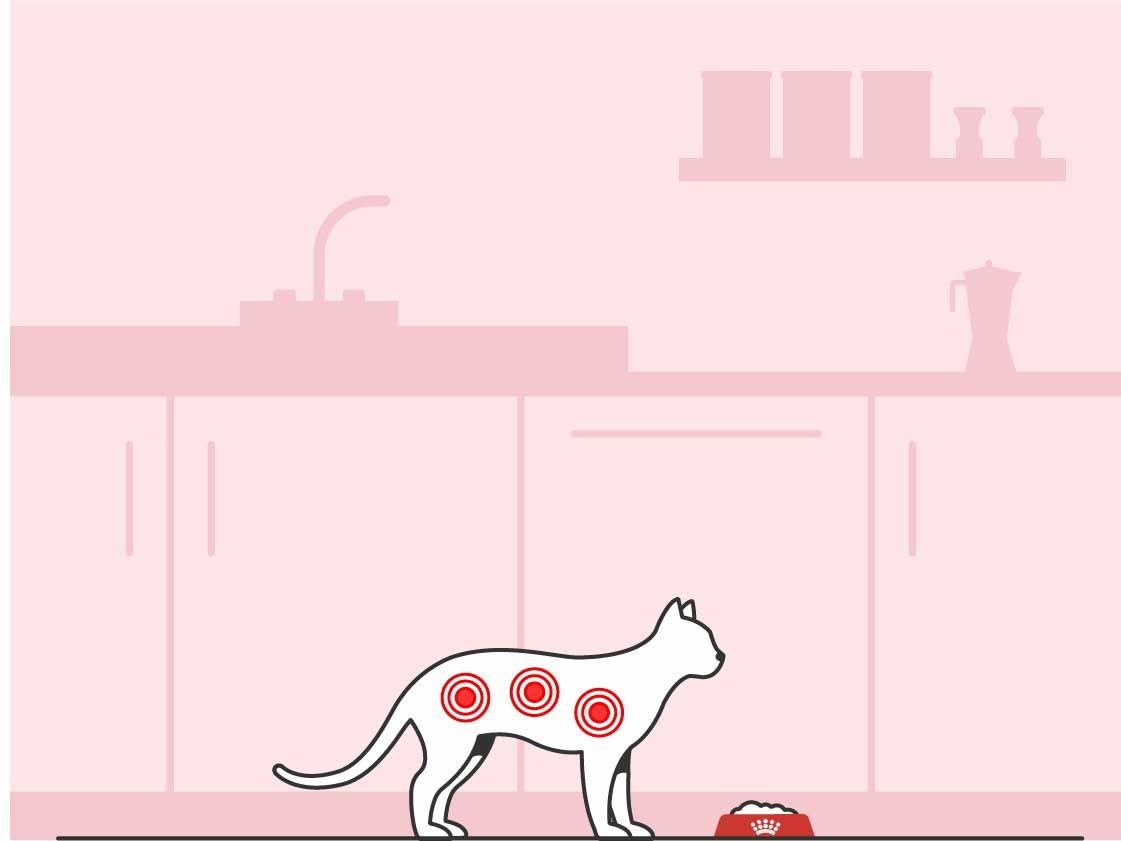Spotting the Signs of a Cat Food Allergy
Article

Cat food allergies occur when their immune system confuses certain molecules in food for a foreign invader, like bacteria or a virus.
As a defence mechanism, the immune system releases inflammatory mediators, and these cause skin problems and gastrointestinal issues typically associated with a food allergy.
Why Is My Cat Allergic to Certain Foods?
A cat can develop food allergy signs at any point, even to ingredients they’ve previously been eating without a problem.The reasons for this aren’t always clear, although there are several known risk factors, such as a genetic predisposition or an allergic disease.
Which Ingredients Are More Likely To Trigger a Cat Food Allergy?
Cat foods containing large intact proteins can trigger an allergic response.In 2016, a study1 found the most frequently reported allergenic protein sources to be beef, fish and chicken.

Does My Cat Have a Food Allergy?
Identifying a food allergy can be a challenging process and the signs vary based on the level of the reaction. However, the most common signs of a cat food allergy include:
- Itching, scratching and biting
- Skin infections
- Inflammation
- Redness
- Sores and rashes
- Vomiting
- Diarrhea
Looking at your cat, you may see some of the following signs across their body:
Face:
Look out for hair loss and redness around your cat's eyes, muzzle and chin.
Mouth:
You may notice your cat has mouth ulcers.
Ears:
The ears of your cat may be red with a waxy discharge and could have an unusual odor.
Skin:
Red skin could be a sign of a food allergy. Scales and crusts on their skin may also indicate a secondary infection.
Coat:
Their coat may have bald spots and brown discoloration from excessive licking.
Paws:
Your cat's paws may show signs of swelling, redness, brown discoloration and have a strange odor.
Gastrointestinal:
Recurrent vomiting, diarrhea and flatulence could also indicate an allergy.
Behavior:
Cats displaying any of the signs mentioned above may chew their paws and pads, lick themselves excessively, scratch themselves with their paws, or rub up against objects, such as furniture.

What Should I Do if I Suspect My Cat Is Allergic to Certain Foods?
If your cat is showing any of the common signs associated with food allergies mentioned here, schedule an appointment with your veterinarian.Food allergies can have serious consequences for a cat’s health and can reduce its quality of life. Left untreated, the signs may worsen over time and lead to complications like secondary skin infections.
What Are the Typical Cat Food Allergy Management Options?
The most common management option for cats experiencing a food allergy is a change in diet, and there are several options your vet may recommend.A novel protein diet contains a single source of protein that is less often used in commercial pet foods and so is less likely to prompt an allergic response. A hydrolyzed protein diet has protein molecules broken down at the molecular level to lessen the likelihood of a reaction.
These diets may also contain nutrients to help support healthy skin and digestive health.
Before your vet recommends one of these diets they’ll usually conduct an elimination diet trial to understand if a food allergy is present. This involves placing a cat on a tailored hydrolyzed diet for several weeks before reintroducing allergens to test for a response.
You can learn more about elimination diet trials and the role of nutrition in our article: Nutrition and Support for Cats With Food Allergies.
Why Is an Elimination Diet Trial Important?
While it may be tempting to choose a novel protein diet yourself, this may not be the best option for your cat.Retail foods often contain several sources of protein and carbohydrates, and they may be difficult to identify from the label. They may also have been produced in environments not designed to prevent cross-contamination.
It’s also possible your cat isn’t suffering from a food allergy. Allergies to something in their environment, like pollen or dust, are far more common in cats than food allergies, yet the signs are indistinguishable from one another.
By conducting an elimination diet trial, your vet will be able to help test allergenic ingredients and rule out other possible causes of your cat’s signs.
References:
1 Mueller R.S., Olivry T, Prélaud P. Critically appraised topic on adverse food reactions of companion animals (2): common food allergen sources in dogs and cats. BMC Vet Res. 2016; 12:9
Related Articles
Like & share this page